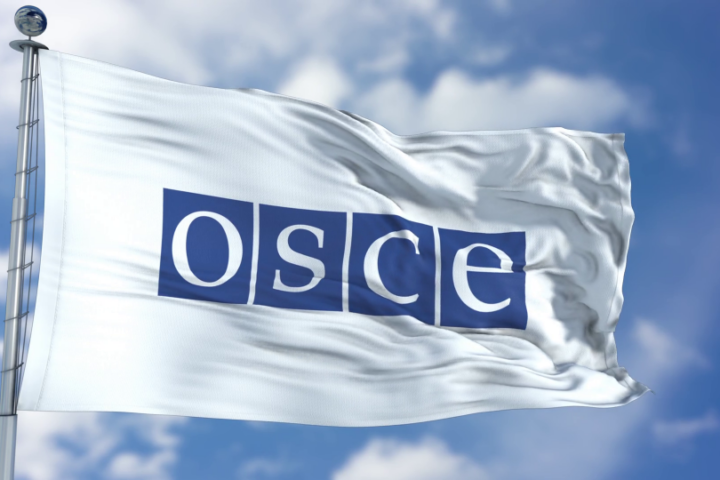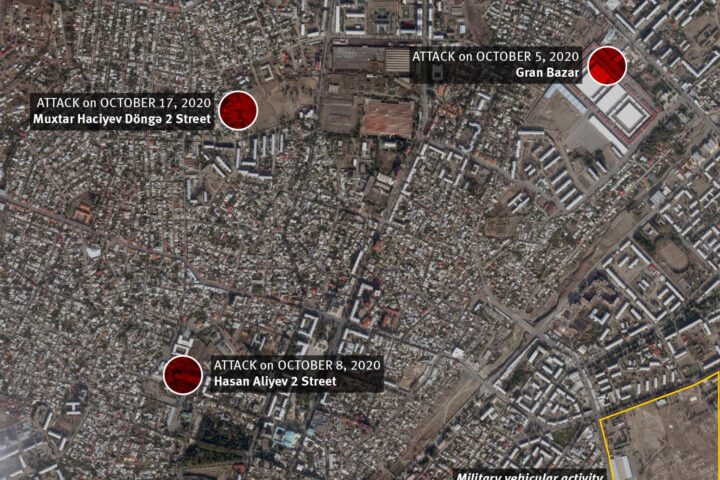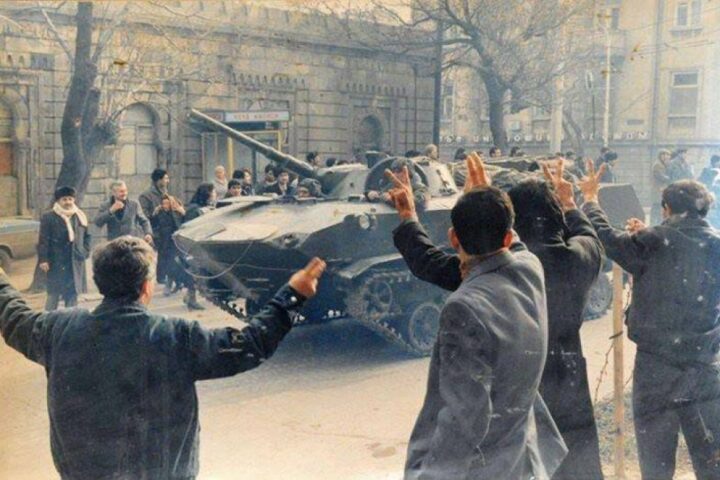4.2. Some reflections on the Resolutions of the UN Security Council on the Nagorno-Karabakh Conflict
4.2.1. Measures for the maintenance of international peace and security in accordance with Chapter VII of the UN Charter
In accordance with Article 39 of the Charter, the UN Security Council determines the existence of any threat to the peace, breach of peace, or act of aggression. Then, in accordance with Article 41 and following articles of the Charter, decision may be taken to impose non-military or military sanctions.
Here, a question may arise, whether the SC is governed by its own discretion while adopting the resolutions under Chapter VII, or any legal restrictions do exist? Article 24.1 of the UN Charter confers upon the SC the primary responsibility for the maintenance of international peace and security. That is why, there is a unanimous opinion on this issue that the SC has a broad freedom of action in actual and legal assessment of three cases (threat to the peace, breach of peace and act of aggression) considered in Article 39 of the Charter. Here, the SC may only be subject to a limited legal control by third organizations.[ref]See Jurij Daniel Aston. «Die Bekämpfung abstrakter Gefahren für den Weltfrieden durch legislative Massnahmen des Sicherheitsrates – Resolution 1373 (2001) im Kontext». In ZaoRV 2002, p. 257 (270). However, principally, the examination of the SC Resolutions by the International Court of Justice is possible under Article 92 and following Articles of the Charter (International Court of Justice did not allow such examination in the Lockerbie Case («Case Concerning Questions of Interpretation and Application of the 1971 Montreal Convention Arising from the Aerial Incidents at Lockerbie», ICJ Reports 1992, p. 126, § 39, in: ILM 1992, p. 671) and the case of Bosnia-Herzogovina against NATO countries («Case Concerning Application of the Convention on the Prevention and Punishment of the Crime of Genocide», ICJ Reports 1992, p. 18 f, § 33-35, in: ILM 1993, p. 898). The only argument was that the current stage of the trial did not give any ground for such examination.)[/ref]
According to Article 24.2 sentence 1 of the UN Charter, the SC shall act in accordance with the purposes and principles of the UN. However, these purposes and principles are systematically restricted by Chapter VII in accordance with Article 24.2 sentence 2 in comparison with Article 2.7 sub-sentence 1 of the Charter. Thus, the SC should settle the issue of existence of the conditions, envisaged in Article 39 by making comments on the content of the norm when any suspicion arises. Here, it should be governed by its broad discretion and the UN purposes and principles.
4.2.2. Legal basis for resolutions adopted by the SC on the Nagorno-Karabakh conflict according to the UN Charter
When reading resolutions of the SC on Nagorno-Karabakh conflict,[ref]All these resolutions of the SC can be found at http://www.un.org/Docs/scres/1993/scres93.htm [/ref] we may conclude that the SC has not adopted these resolutions on the basis of Chapter VII of the Charter. Because, any resolution, adopted in accordance with Chapter VII, should contain at the end of its preamble the following sentence: «acting under Charter VII of the Charter»[ref]As an example, the SC Resolutions on the Iraq issue: No 678, dated: 29.11.1990 «On liberation of Kuwait», also No 687, dated: 03.04.1991 «On peace agreement with Iraq», see Tomuschat, p. 531[/ref]. None of the resolutions, adopted on the Nagorno-Karabakh conflict, contains such provision. A question arises, what was the legal basis for the UN SC to adopt the said resolutions? In this connection, only Article 36 of the Charter can be referred to. This article says that the SC may, at any stage of a dispute of the nature referred to in Article 33 or of a situation of like nature, recommend appropriate procedures or methods of adjustment.
Now, let us analyse these resolutions one after another:
a) Although Resolution 822 adopted by the SC on 30 April 1993 states the fact of deterioration of the relations between the Republic of Azerbaijan and the Republic of Armenia, Armenia is not mentioned here as a party involved in the conflict. Moreover, the resolution stresses the sovereignty and territorial integrity of all states of the region, inviolability of international borders and inadmissibility of the use of force for acquisition of territory. Further, the SC demands “immediate withdrawal of occupying forces from the Kelbadjar district and other recently occupied areas of Azerbaijan”. As it is evident, the expression «all occupying forces» does not clearly specify who is meant, and naturally, similar expressions make it difficult to comment on the resolution. I think, it would have been better to concretely demand immediate withdrawal of the Armed Forces of the Republic of Armenia and separatist armed groups of Nagorno-Karabakh from the occupied territories of Azerbaijan. But, we should mention here that if we take into consideration procedural difficulties in decision-making mechanism of the SC, it was impossible to include such provision in the text of the resolution. Further, the SC calls the parties to continue the negotiations within the framework of the peace process of the Minsk Group of Conference on Security and Cooperation in Europe (CSCE).
b) Preamble of the SC resolution 853 dated 29 July 1993, restates the fact of deterioration of the relations between the Republic of Azerbaijan and the Republic of Armenia, principles of sovereignty and territorial integrity of the states. In comparison with the previous resolution, it mentions territorial integrity of Azerbaijan more explicitly. In the operational part of the resolution the SC condemns the occupation of the district of Agdam and other recently occupied areas of the Republic of Azerbaijan and demands immediate, complete and unconditional withdrawal of occupying forces from these territories. As it is evident, here it is not also defined who is meant under the expression «occupying forces». In comparison with resolution 822, this resolution contains several provisions, interpretation of which can serve as a ground to conclude on indirect involvement of the Republic of Armenia in the conflict. The matter is that in this resolution the SC urges the Government of Armenia to continue to exert its influence to achieve compliance by the Armenians of the Nagorno-Garabakh region of the Republic of Azerbaijan with its resolution 822 (1993) and the acceptance by this party of the proposals of the Minsk Group of the CSCE. Of course, the Republic of Armenia is not mentioned in this provision as a direct party, but it is difficult to interpret the word «influence» used here. This means that if the Armenian population of Nagorno-Karabakh was treated as an independent party, as claimed by themselves and officials of the Republic of Armenia, then they would not have to agree to the influence of the Republic of Armenia as an independent party. However, inclusion of this provision in the resolution gives reason to conclude that although indirectly the SC has recognized by default the involvement of the Republic of Armenia in the conflict as a party.
Then, the above mentioned provision indicates Nagorno-Karabakh as a part of the territory of the Republic of Azerbaijan. There is nothing new in the resolution except the above mentioned.
c) In its Resolution 874, dated 14 October 1993, the SC expresses its serious concern that a continuation of the conflict in and around the Nagorno-Karabakh Region of the Republic of Azerbaijan, and of the tensions between the Republic of Armenia and the Republic of Azerbaijan would endanger peace and security in the region. As it is evident, for the first time, this resolution concretely defines the object of the conflict: the conflict in and around the Nagorno-Karabakh region of the Republic of Azerbaijan. Previous two resolutions mentioned the occupation of several districts of the Republic of Azerbaijan and it was difficult to understand the essence of the conflict. Moreover, in this resolution the SC also draws attention to the fact of displacement of large numbers of civilians of the Republic of Azerbaijan from their native lands. Furthermore, like in the resolution 853, the SC also calls all states of the region to maintain peace and security.
d) Resolution 884, dated 12 November 1993, also states important principles of international law and mentions continuation of the tensions between the Republic of Azerbaijan and the Republic of Armenia. The SC notes with alarm the escalation in armed hostilities and excesses in the use of force in response to those violations, in particular the occupation of the Zangilan district and the city of Goradiz in the Republic of Azerbaijan. Here also, forces, occupying these territories are not mentioned unequivocally. Besides that the SC expresses its grave concern at the latest displacement of a large number of civilians and the humanitarian emergency in the Zangilan district and the city of Goradiz, on Azerbaijan’s southern frontier.
In the operative part of the resolution the SC condemns the occupation of the above mentiond territories, attacks on civilians and bombardments of the territory of the Republic of Azerbaijan. This provision specifies expressly either who attacked the peaceful population and bombed the Azerbaijani lands.
Further on, the SC calls upon the Government of Armenia to use its influence to achieve compliance by the Armenians of the Nagorno-Karabakh region of the Republic of Azerbaijan with resolutions 822 (1993), 853 (1993) and 874 (1993) and to ensure that the forces involved are not provided with the means to extend their military campaign further. Again, like in the previous provisions of the resolution, the SC uses abstruct and ambiguous words like «forces involved». However, as it is evident, the second part of this sentence of the resolution contains an interesting provision, i.e. the Government of Armenia is called upon to ensure that the forces involved are not provided with the means in order to continue military operations. For the first time in this resolution, although not openly, support of the above mentioned «involved forces» by the Republic of Armenia is implied. May be, by this provision the SC wants to express the fact of violation of the principle of prohibition of the use of force by Armenia.
Then, the SC demands immediate cessation of armed hostilities and withdrawal of occupying forces from the Zangilan district and the city of Goradiz.
Interim conclusion
I think the resolutions adopted by the UN SC did not fully reflect the realities and the SC had not correctly assessed the situation. It means that the resolutions had to be adopted upon Chapter VII of the UN Charter, because conditions, envisaged in Article 39, were present. I would like to substantiate my position by commenting on Article 39. For this purpose, we should clarify presence of any of the three conditions as a result of the actions of Armenia, as envisaged in Article 39 of the UN Charter.
4.3. Definition of peace under Article 39 of the UN Charter
First of all, we should analyse which definition of peace is envisaged in Article 39 of the Charter. According to «the notion of negative peace», «peace» means absence of only that type of force in the international relations, which is envisaged in Article 2.4 of the UN Charter[ref]see, Michael Bothe., in: Wolfgang Graf Vitzthum, Voelkerrecht, 2. Aufl., Berlin/New York 2001, p. 612.[/ref]When interpreting Article 39 according to this definition, we may conclude that the SC can take measures upon Chapter VII only if armed force is used or threat of use of such force is present.










